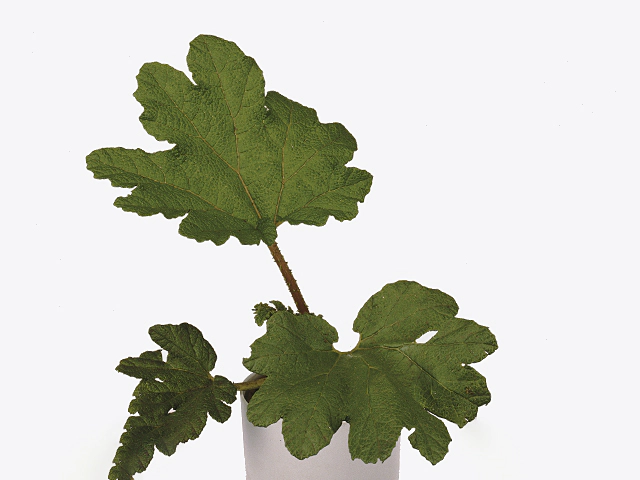Gunnera manicata

| Winter hardness | Limited (USDA-zone 8) |
| Plant height | 1,8 - 2 m |
| Flowering month(s) | July; August |
| Light conditions | Semi-shades; Sunny |
| Moisture requirements | Moist; Wet |
| Soil type | Humus rich |
The Gunnera manicata, also known as the giant rhubarb or dinosaur food, is an impressive plant that can add a touch of prehistoric charm to any garden. While it may not be the most winter-hardy plant, it is still a popular choice among gardeners in USDA Zone 8.
Standing at a height of 1.8 to 2 meters, the Gunnera manicata is a majestic plant that commands attention. Its large, umbrella-like leaves can reach up to two meters in diameter, creating a stunning focal point in any landscape. The leaves are deeply lobed and have a rough texture, which adds to their unique and exotic appeal.
One of the most notable features of this plant is its flowering period. The Gunnera manicata bursts into bloom during the months of July and August, offering a burst of color to the garden. Its cone-shaped flower clusters are topped with tiny red or brown flowers, which are a source of nectar for bees and other pollinators. The flowering period is relatively short-lived, but the vibrant display is well worth the wait.
When it comes to light conditions, the Gunnera manicata thrives in semi-shaded to sunny areas. It can tolerate some shade, but it generally prefers full sun to develop its impressive foliage and flowers. In terms of moisture requirements, this plant loves moisture-rich environments. It can adapt to moist or even wet soil conditions, making it an excellent choice for areas with high rainfall or near water features.
In terms of soil type, the Gunnera manicata thrives in humus-rich soil. It prefers loose, well-draining soil that retains moisture without becoming waterlogged. Adding organic matter, such as compost or well-rotted manure, can improve the soil quality and provide the necessary nutrients for the plant to grow vigorously.
To protect the Gunnera manicata during winter, additional measures may be necessary in USDA Zone 8 or colder regions. Providing a thick layer of mulch around the base of the plant can help insulate the roots and protect them from freezing temperatures. Additionally, covering the plant with a frost cloth or moving it to a sheltered location can offer further protection from harsh winter conditions.
Despite its limited winter hardiness, the Gunnera manicata remains a sought-after plant for those willing to accommodate its needs. Its large size and unique appearance make it a captivating addition to any garden, offering a touch of tropical allure. As long as it receives the right light conditions, moisture, and soil type, this plant is sure to create a stunning display and leave a lasting impression on anyone who sees it.